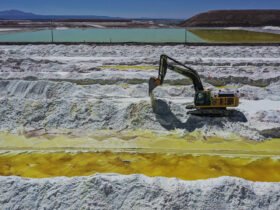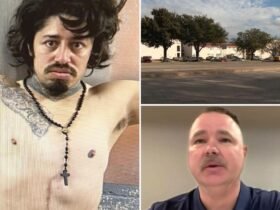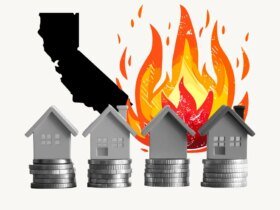She found that older homeowners were more likely to move than rebuild, and that moving quickly came at the expense of rebuilding in a way that could reduce the risk of future wildfires.
“Santa Rosa is a very important lesson,” she said. “People went back and rebuilt it on the spot, and that’s exactly what you don’t want to do. What they should have done well before the disaster was to have a rebuilding plan that said if your house burns down, we won’t support you in rebuilding in the same way.”
While a methodical plan that includes policy recommendations and repurposing priorities and mandates for resilient building materials has clear advantages, there are also disadvantages.
A longer reconstruction period comes at the expense of restarting local economies, as previous fires have shown. Municipalities must act quickly to maintain tax revenues so that critical services do not have to be cut. And let’s not forget the obvious: people need long-term shelter so they don’t have to pay costs associated with rebuilding, while at the same time paying rent for temporary housing.
Changes in housing and zoning after a fire face the same headwinds as in normal civilian life – namely local politics.
“Disaster recovery is political, not technical,” says Andrew Rumbach, researcher at Urban Institute. “We try to make good decisions with the information we have, but we give a lot of power to local elected officials, and they listen to the voters. It is politically very unpopular to tell people they cannot rebuild.”
However, each of California’s previous fires had different dynamics.
Located in wine country north of San Francisco, Santa Rosa offers a loose analogue to Altadena. Ventura, a coastal city just north of Oxnar, has a larger population of high-income residents and more expensive homes, making it similar to Pacific Palisades.
In the aftermath of the Thomas Fire, displaced residents who had the means to do so flocked to Ventura’s densely populated downtown. The area happened to be experiencing a large influx of new multi-family housing, providing shelter for those deciding whether to rebuild.
Ultimately, many chose not to. Of the 530 homes that burned, about 300 used their insurance money and the proceeds from the sale of their land to move elsewhere. These were mostly older people who ignored the long hassle of reconstruction.
This could be predictive for Pacific Palisades. Homeowners there whose homes burned down — including celebrities Mel Gibson, Billy Crystal, Paris Hilton, Anthony Hopkins, Melissa Rivers and Miles Teller — can afford expensive temporary housing, and the long-lived elderly may not want to wait for it.
The rush to expensive rental properties is already happening in LA. An officer from the area said this New York Times that she has a rental property for which 1,000 applications were received in the days following the devastation in Pacific Palisades.
In the two years after the Tubbs fire – which was then the most devastating in California history – 28% of households whose homes were damaged moved to another census tract. Those who left were also older, and fewer people chose to rebuild in Santa Rosa.
Older people left more often, but that was also because many of them were planning to leave anyway. The fires simply accelerated their timelines to move.
It’s a similar dynamic to the population outflow from Manhattan in the months following the outbreak of the COVID-19 pandemic in 2020. Residents who planned to leave in the next two years left in advance, giving the false impression that there was there was a permanent population decline.
Ventura and Santa Rosa took different approaches to rebuilding. Ventura had a longer recovery process, while Santa Rosa streamlined permit processing and applications Federal Agency for Emergency Management (FEMA).
The Ventura method might better prepare for a future fire, but would undoubtedly face opposition from homeowners in Pacific Palisades. It’s not hard to imagine Mel Gibson ranting on Joe Rogan’s podcast about new restrictions, even if it was as trivial as moving bushes that were next to his house, just a few feet away from it.
Los Angeles Mayor Karen Bass and California Governor Gavin Newsom have already indicated they favor rapid rebuilding, with both aiming to have building permits approved within 30 days.
Bass signed an executive order creating a task force entity to expedite approvals, and the group will be represented by all relevant city, state and federal agencies. Newsom’s order calls for waiving construction requirements related to environmental and conservation laws.
There is also a requirement that eligible rebuilds must not exceed 110% of the previous size of the destroyed home, meaning they will not impose mandates on defensible spaces around homes that tend to reduce them.
Paradise, California, is a rural community with an older population, making its specifics less applicable to the urban environment of Los Angeles. However, it serves as a warning of what can happen if communities and homeowners are not prepared for the worst.
Before the 2018 Camp Fire, the city’s 27,000 residents had significantly less wealth, with a median home value of $218,400. About 17% of the housing stock consisted of mobile homes.
The Camp Fire forced about 13,000 households to leave, most of them going to nearby Chico. Nearly 41% of those displaced were low-income and 34% were renters. Those who did not move suffered a major loss of income and the fire destroyed the city’s infrastructure.
The year after the fire the city had a population of just over 4,000, and currently there are about 9,000. Those who stayed did so because they couldn’t leave.
“You’ll definitely see that pattern among Altadena’s working class,” Chapple said. “People will stay in that area as much as possible, but some just won’t be able to afford to leave.”
Find more information about our wildfire coverage here.













Leave a Reply